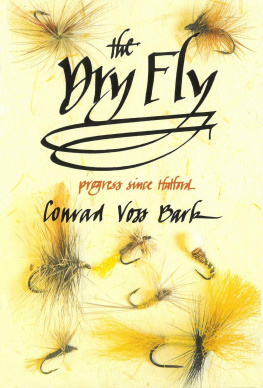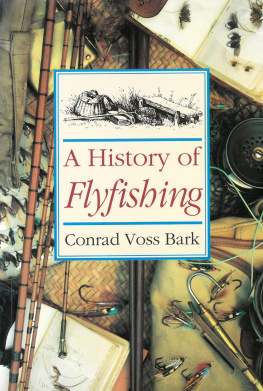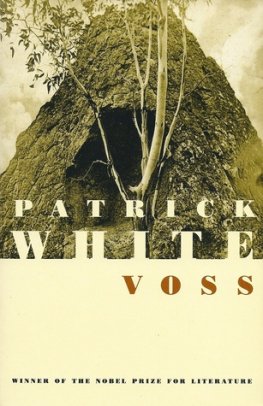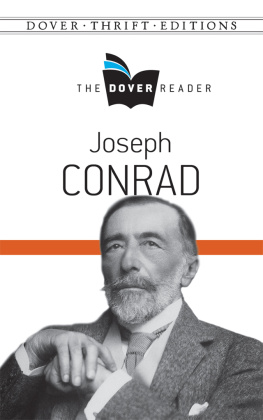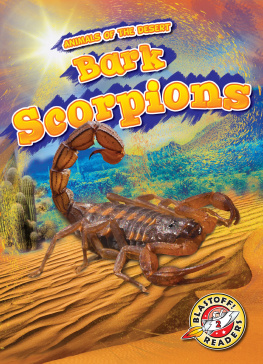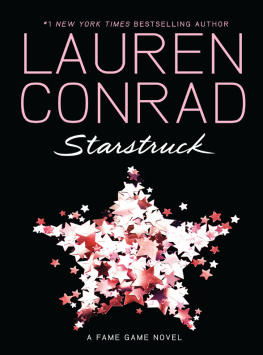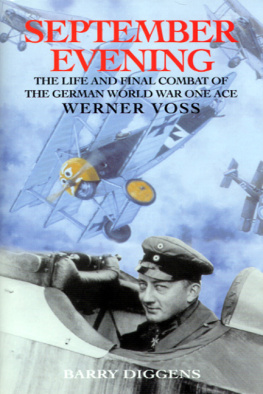Conrad Voss Bark - The Dry Fly
Here you can read online Conrad Voss Bark - The Dry Fly full text of the book (entire story) in english for free. Download pdf and epub, get meaning, cover and reviews about this ebook. year: 2020, publisher: Merlin Unwin Books Limited, genre: Detective and thriller. Description of the work, (preface) as well as reviews are available. Best literature library LitArk.com created for fans of good reading and offers a wide selection of genres:
Romance novel
Science fiction
Adventure
Detective
Science
History
Home and family
Prose
Art
Politics
Computer
Non-fiction
Religion
Business
Children
Humor
Choose a favorite category and find really read worthwhile books. Enjoy immersion in the world of imagination, feel the emotions of the characters or learn something new for yourself, make an fascinating discovery.
- Book:The Dry Fly
- Author:
- Publisher:Merlin Unwin Books Limited
- Genre:
- Year:2020
- Rating:5 / 5
- Favourites:Add to favourites
- Your mark:
- 100
- 1
- 2
- 3
- 4
- 5
The Dry Fly: summary, description and annotation
We offer to read an annotation, description, summary or preface (depends on what the author of the book "The Dry Fly" wrote himself). If you haven't found the necessary information about the book — write in the comments, we will try to find it.
The Dry Fly — read online for free the complete book (whole text) full work
Below is the text of the book, divided by pages. System saving the place of the last page read, allows you to conveniently read the book "The Dry Fly" online for free, without having to search again every time where you left off. Put a bookmark, and you can go to the page where you finished reading at any time.
Font size:
Interval:
Bookmark:
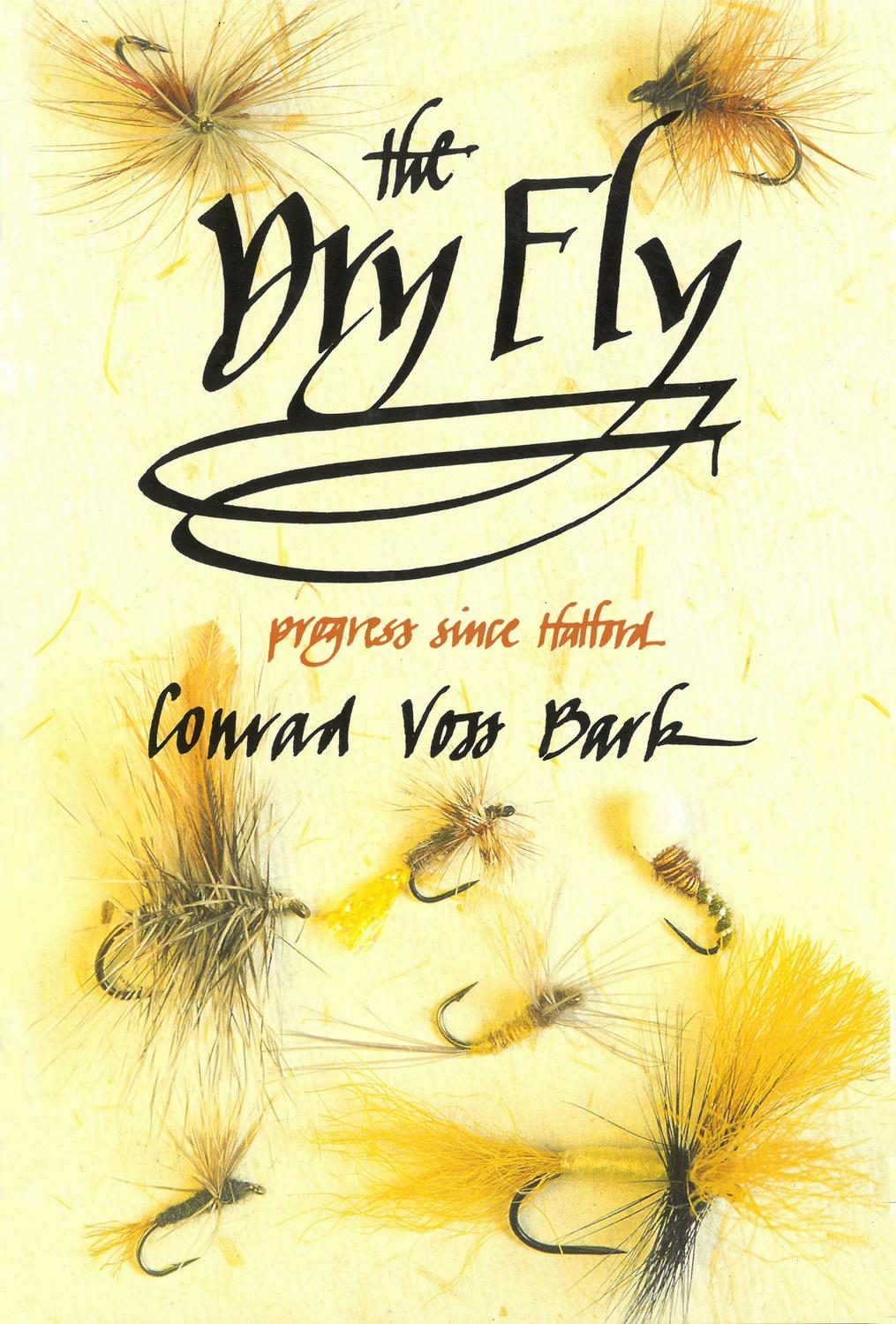
P late A
Sparkle Dun, Duck Fly, Blagdon Green Midge, Caperer, Black Gnat, Beacon Beige, Gold-ribbed Hares Ear, Micro Orange Quill USD Dun, Adams, Threlfall, Brown Upright, Houghton Ruby
P late B
Shadow Mayfly, Alstons Hackle Mayfly Poly May Dun, Grey Wulff, Poly May Spinner
P late C
Silver Sedge, Houghton Black Sedge, Terrys Terror Elk Hair Caddis, Houghton Orange Sedge, Winged Caperer Little Red Sedge, Humpy, Palmer Sedge, G&H Sedge
P late D
Winged GRHE, Suspender Midge, Iron Blue Dun Super Grizzly Emerger, Greenwells Glory, Lunns Particular Leckford Olive Dun, Blue-winged Olive, Lunns Olive Dun Dark Watchet, Orange Spinner, Pheasant Tail Last Hope, Parachute Fly, Funneldun, Janus
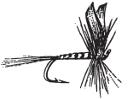
W ith due deference let us record how much we owe to our ancestors: to begin with, Ogden of Cheltenham and Foster of Ashbourne. They tied the first dry flies, at some time around the 1840s and 50s. Thicker bunches of hackles gave them a longer float than the standard wet fly patterns. Then there was Pulman of Axminster who first called a floating fly a dry fly. He explained that if the trout were taking insects on the surface of the water he would take a dry fly from his box and put it to the trout. The phrase dry fly caught on.
There were many others in the late 1700s and the mid and early 1800s who realised that the trout often took a floating fly before it sank. They made a point of trying to do this: Stewart of Edinburgh, Sir Humphrey Davy, George Bainbridge, Francis Francis, and boys of the Winchester Schools fishing society. They whisked the soaked wet flies through the air to dry them before they made a cast.
The first complete description of the dry fly that we have, the design of the flies and the way they should be cast, came from David Foster, the Ashbourne tackle dealer and guide on the Derbyshire Dove. He kept notes of his dry fly system which were not dated but were probably written between the 1840s and 60s or early 70s. They were edited posthumously by his sons and published in 1882 as The Scientific Angler. There, precise in every detail, was the dry fly as we know it.
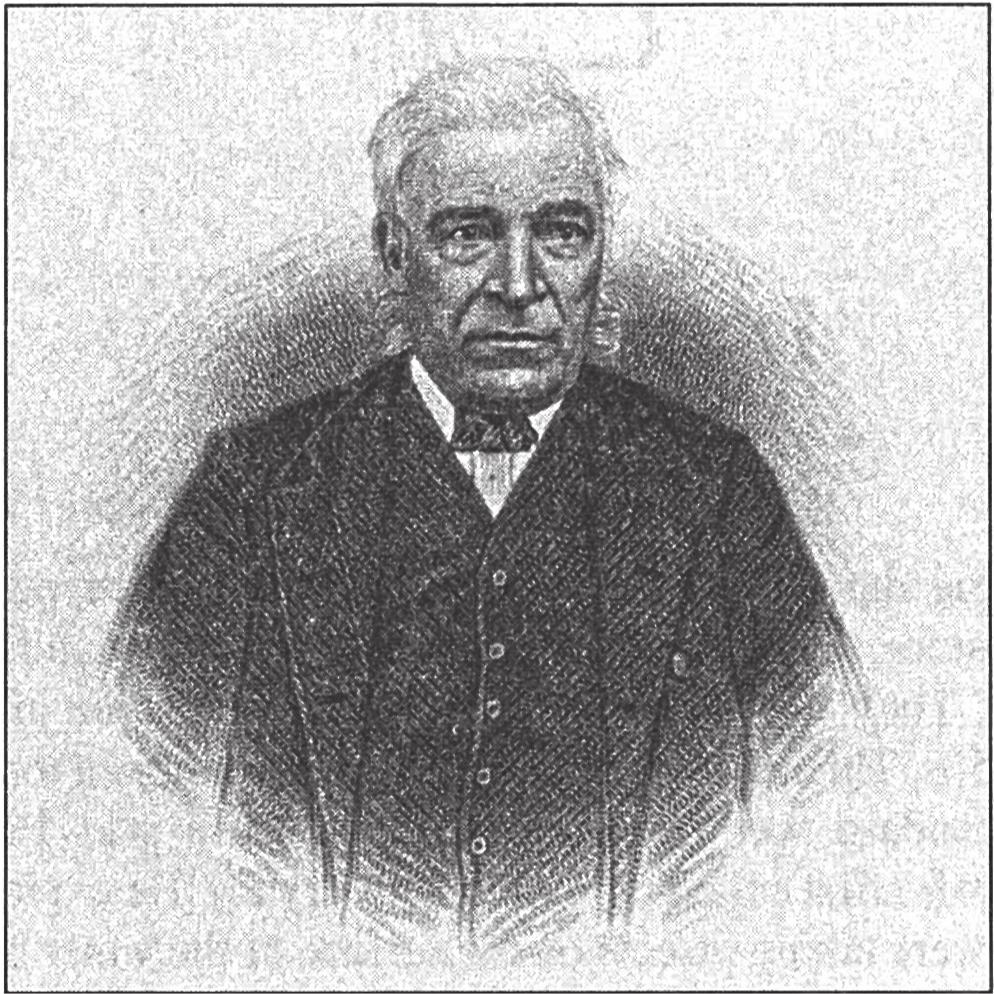
David Foster, the first to define the dry fly as we now know it
The wet flies of that time had very little hackle because the hackle was supposed to represent the legs of the insect. Foster didnt accept this. He made his hackle ample and full to assist flotation. He goes on:
with the duns the wings must be full and erect, or cock up as it is sometimes designated, so as to admit the fly [with the full hackle] to be comparatively dry for some little time, when, becoming saturated, a few backwards and forwards whisks of the line and rod should be given before the next cast again. This is repeated whenever the flies become saturated as by so doing the trouble of repeatedly changing the lure is greatly lessened.
That last sentence is his reply to Pulman of Axminster who, in his book The Vade Mecum of Fly Fishing for Trout (1841), recommended changing the soaked fly for a dry one when the trout were feeding on the surface. A fly that would float much longer without being changed was Fosters answer. He goes on to say
The dry fly system is by far the most scientific and artistic way of alluring trout or grayling, and well-fished streams will yield more and heavier dishes of fish to it than any other method or system of angling whatever.
But the most remarkable thing about Foster which has been overlooked by other writers, such as Waller Hills, is that he emphasises that the artificial fly must be regarded from below rather than looking down on it from above when the fly is being designed and tied. In this he was far in advance of the views of Halford and Marryat who only tried to get close imitations of the natural insect and never considered looking at their flies from below, from the trouts point of view.
One cannot help wondering why Halford and Marryat did not pay tribute to Foster for his work on the dry fly. When Fosters book was published Halford and Marryat were carrying out their own researches on the Test. Fosters book was reviewed in the angling journals and would have been in the library of the Flyfishers Club of which Halford was a member.

Frederic M. Halford, who established his famous dry fly code
It was curious that Halford never mentioned Foster. There may have been many reasons; he was too busy, he hadnt heard of Fosters book, it was not written by Foster but by his sons, they may have exaggerated their fathers theories. It could have been any of these reasons.
Halfords first book, Floating Flies and Flow to Dress Them, was published in 1886, four years after Fosters. It was a remarkable book in every way and rightly praised. It insisted upon a rigid discipline and the closest possible imitation of the natural insect, even to the colour of its eyes. All his flies - there were a hundred dressings - were designed to float, and on the whole they floated better than any previous patterns. They can still be seen in the library of The Flyfishers Club, beautiful little things, and how important were the delicate bodies, made of quill to help flotation.
Halfords relationship with Marryat was, to begin with, that of a pupil to a teacher. He met Marryat by chance in 1879 and was at once aware of Marryats greater knowledge about flies and fishing. Marryat was once described by Edward Grey, later Viscount Grey of Fallodon, as being the best trout fisherman in England. Marryat was a retired Indian Army Officer who spent most of his time fishing the Test. Halford frequently went to him for advice. They became friendly.
In 1880 Halford took rooms at Bossington Mill at the end of the Houghton Club water of the Test, with the intention of studying the river flies and their matching artificials. He asked Marryat to join him and after six years intensive work by them both, Halfords first book was published. He asked Marryat to be co-author as Marryat had in fact done a very large part of their research but Marryat refused. No one knew why he refused and Marryat himself never said. They merely parted and there was no explanation.
They had been together in close company for six years and over such a time they had got to know each other well and it has always seemed to me that Marryat gradually began to dislike Halfords dictatorial attitude to the dry fly. As Waller Hills remarked in his A History of Fishing for Trout:
[Halford] considered that the dry fly had superseded for all time and in all places all other methods of fly fishing and that those who thought otherwise were either ignorant or incompetent.
We know that Marryat did not take that attitude. A fly box of his which I once saw in the library of The Flyfishers Club contained the kind of wet flies that Skues would have used before he tied his nymph patterns. In other words, Marryat liked to fish the dry fly but he was no purist and would fish a wet fly from time to time if conditions demanded it, if the trout were feeding under water on the ascending nymphs.
Font size:
Interval:
Bookmark:
Similar books «The Dry Fly»
Look at similar books to The Dry Fly. We have selected literature similar in name and meaning in the hope of providing readers with more options to find new, interesting, not yet read works.
Discussion, reviews of the book The Dry Fly and just readers' own opinions. Leave your comments, write what you think about the work, its meaning or the main characters. Specify what exactly you liked and what you didn't like, and why you think so.

